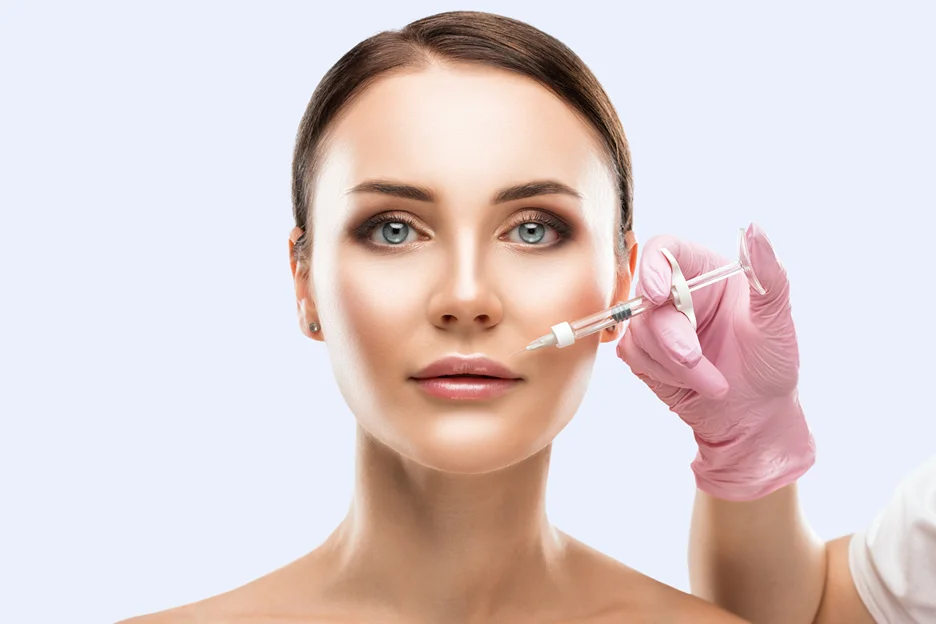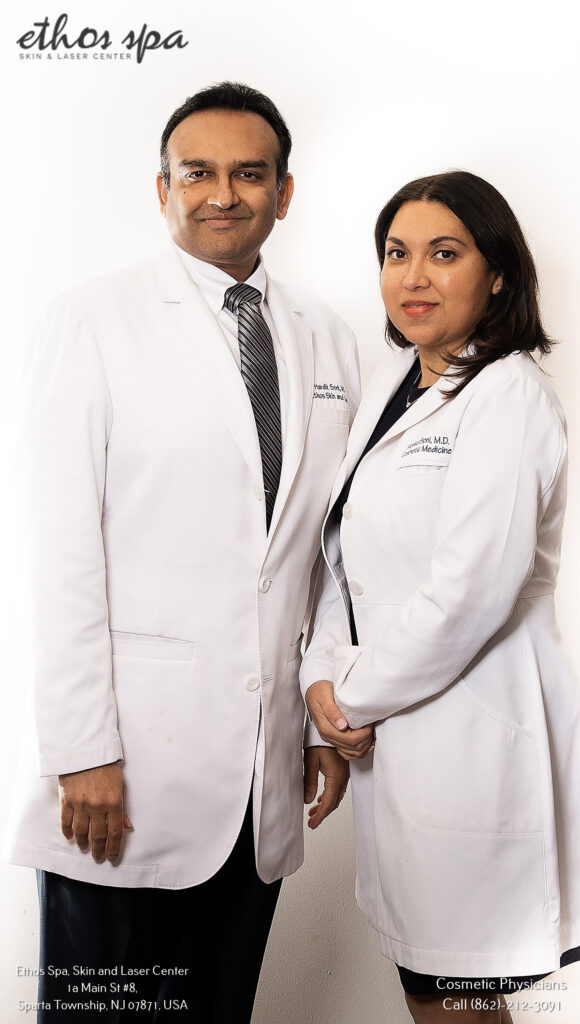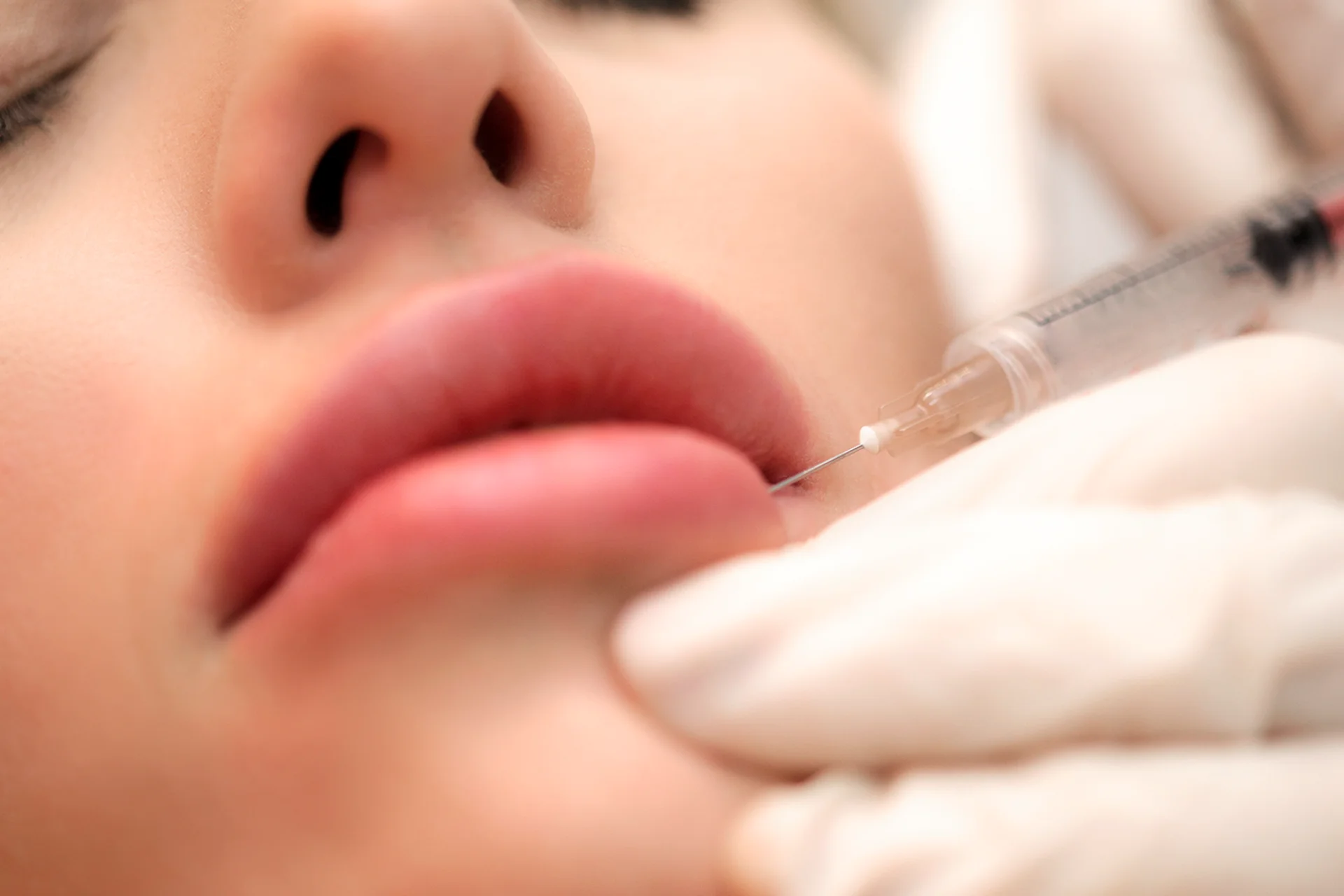The Signs, Risks, and Management of Vascular Occlusion in Lip Filler Procedures
You’ve finally decided to enhance your natural beauty with lip fillers, aiming for that fuller, more defined pout. But there’s one concern that might be lingering in the back of your mind: vascular occlusion. You know it’s a potential risk, but you may not be fully aware of what it entails, the signs to look out for, and how it can be managed.
Don’t worry, we’ve got your back! This article will delve into vascular occlusion, its connection to lip fillers, preventative measures, and treatment options.
What are Lip Fillers?
Lip fillers, a category of dermal fillers, are substances injected into the lips to enhance their volume. These substances vary in composition and longevity, each contributing to the final aesthetic outcome in a unique way. Renowned brands, such as Juvederm® and Restylane® are among the go-to choices for many seeking to augment their lip volume.
The lip filler procedure typically starts with the application of a topical anesthetic to numb the lips, ensuring maximum comfort during the process. Following this, the healthcare provider utilizes a thin needle to inject the chosen filler into the lips, including any or all parts and edges as required. The effects of this treatment can last from several months up to a year, contingent upon the specific type of filler used.
Here’s a quick rundown of the different types of substances used in lip fillers:
| Type of Filler | Description |
| Synthetic Hyaluronic Acid (HA) | This is the most common type of lip filler. HA is a naturally occurring substance in the body found in high concentrations in soft connective tissues and the fluid surrounding the eyes. The version used in fillers is a reformulated synthetic extract of the natural compound. |
| Poly-L-Lactic Acid | This filler works by stimulating collagen production, which, over time, adds volume to the lips. |
| Calcium Hydroxylapatite | Comprising microscopic particles suspended in a gel-like solution, this filler can both add volume to the lips and stimulate collagen production. |
| Autologous Fat Injections | This procedure involves extracting fat from one part of the body and injecting it into the lips. |
| Polymethylmethacrylate (PMMA) | A semi-permanent filler option, PMMA involves the injection of tiny beads of synthetic material into the lips. |
| Collagen | Once the most commonly used filler, collagen is now less favored due to newer, safer options that offer longer-lasting effects. |
Understanding Vascular Occlusion

Vascular occlusion, also known as lip filler occlusion, is a potential adverse event that can occur post-dermal filler injection. It happens when the filler material, often hyaluronic acid or calcium hydroxyapatite, unintentionally gets injected into a blood vessel, obstructing the blood flow. This blockage can lead to tissue necrosis, a condition where tissue dies due to a lack of oxygen and nutrients. In severe cases, it can even result in blindness from fillers if the filler material migrates to the eyes.
Lip fillers come into play when a needle or cannula is used to inject a substance into your lips to enhance their shape and volume. If the filler material accidentally gets injected into a blood vessel, it can cause vascular occlusion. This injectable filler lip occlusion can be a daunting prospect, but with the right knowledge and precautions, the risk can be minimized.
Needles vs Cannulas
1. Needles
Dermal filler injections often call for the use of needles, despite the associated safety concerns. Needles, recognized by their sharp tip, present an increased chance of puncturing blood vessels during filler treatments. This occurrence can potentially lead to vascular occlusion, a severe complication resulting from a blocked blood vessel.
Statistical insights suggest that the likelihood of causing such a complication with a needle is six times greater than with a cannula. However, this does not diminish the value of needles entirely. In the context of lip filler treatments, needles maintain their stronghold and are considered safe for use, despite the highlighted risk.
2. Cannulas
Cannulas, on the other hand, emerge as a safer alternative in the face of vascular complications, specifically occlusion. Unlike needles, cannulas are crafted with a blunt tip, a design choice that significantly reduces the probability of puncturing blood vessels. This feature effectively minimizes the likelihood of causing occlusion during dermal filler treatments.
Research data support this assertion, showcasing a 77.1% reduction in the odds of occlusion when injections are administered using cannulas as opposed to needles. Hence, in terms of the risk of vascular occlusion, the use of cannulas is generally viewed as the safer option in the field of dermal filler treatments.
Signs of Vascular Occlusion After Lip Filler
Recognizing the signs of vascular occlusion after lip filler is crucial for prompt treatment and minimizing potential damage. These signs can vary in intensity and onset and might not always be immediately apparent. Therefore, it’s essential to remain vigilant for any unusual changes after leaving the practitioner’s office, seeking immediate medical attention if necessary.
Common signs of vascular occlusion to watch out for include:
- Severe Pain: The sudden onset of severe pain that is disproportionate to the procedure. The discomfort experienced typically far exceeds the usual expectations following a filler procedure.
- Blanching: One of the earliest visual signs of vascular occlusion is blanching or a marked whitening of the skin. This discoloration arises due to the interruption of blood flow to the treated area.
- Skin Discoloration: A significant change in skin color, particularly a shift towards a dusky, purple color indicates a vascular occlusion after lip fillers. These discolorations are indicative of compromised blood flow. These changes in skin color arise due to delayed capillary refill time when pressure is applied to the skin.
- Coolness: If the treated area begins to feel unusually cool to touch, this could be a symptom of reduced blood flow, and hence a potential sign of vascular occlusion.
- Swelling: A sudden and substantial increase in swelling in the treated area may also signal vascular occlusion. This swelling is often accompanied by warmth and redness, a response to disturbed blood flow.
- Numbness: A loss of sensation or numbness in the treated area could be another sign of vascular occlusion. This symptom is a direct consequence of reduced blood supply affecting nerve function in the treated area.
Pictures of lip filler occlusion can provide a clearer understanding of these signs. Nevertheless, always keep in mind that the onset and intensity of these signs can vary.
It’s important to stay vigilant for any signs of lip filler occlusion symptoms, even after you’ve left your practitioner’s office. If you notice any changes such as disproportionate pain, changes in skin color, or other warning signs, seek medical attention immediately.
Preventative Measures and Precautions
Prevention is always better than cure, and this holds true for vascular occlusion from lip filler risks. Here are some preventative measures and precautions that can be taken to reduce the risk of vascular occlusions:
- Experienced Practitioners: Make sure your practitioner is both experienced and knowledgeable about facial anatomy and the correct injection techniques. They should also be fully equipped to manage any complications should they arise.
- Consider Cannulas: Discuss with your practitioner about possibly using cannulas rather than needles for the procedure. The blunt tip of a cannula is less likely to penetrate blood vessels, therefore reducing the risk of vascular occlusion.
- Aspiration: As a prophylactic measure, especially in highly vascularized areas, aspiration should be performed prior to injection. In these instances, a new needle without filler should be used.
- Conservative Measures: In certain cases, occlusion may be resolved using conservative measures. These can include massaging, tapping, or applying heat to the affected area.
- Early Diagnosis and Treatment: Early diagnosis and intervention are key to a successful recovery with minimal side effects.
- Use of Hyaluronidase: Regardless of the filler used, hyaluronidase is often recommended for all cases of vascular compromise. This is due to its ability to reduce edema and potentially alleviate vessel-occluding pressure. However, it’s important to be aware that immediate and delayed reactions, although rare, have been associated with hyaluronidase. Prescribing guidelines should always be closely followed.
- Avoiding the “Danger Triangle”: Aesthetic providers must be mindful of the serious potential complications that can result from the occlusion of specific facial arterial and venous structures.
Treating Vascular Occlusion After Lip Filler
First things first: reach out to your practitioner immediately to inform them of the situation. They may start you on treatments such as hyaluronidase injections (if hyaluronic acid fillers were used), warm compresses, and medications to improve blood flow.
In addition to professional medical treatment, there are self-care measures you can take. Applying warm compresses can help improve blood flow and dissolve the filler material. However, it’s important to follow your practitioner’s instructions carefully and avoid any DIY treatments that could potentially worsen the situation.
Conclusion

Wrapping up, it’s imperative to remember that although the prospect of vascular occlusion can seem daunting, it’s a manageable risk. Equipped with the right knowledge and by taking the necessary precautions, its incidence can be significantly reduced. Should you encounter this complication post-treatment, prompt medical intervention is vital.
Managed correctly, such temporary hiccups don’t have to thwart your journey toward attaining your desired lip aesthetic. After all, your safety and well-being should always take center stage in any cosmetic procedure.
We invite you to tap into the experience and expertise offered at Ethos Spa, where your beauty aspirations meet skilled hands. Our team of experts is well-versed in the intricacies of lip filler procedures and dedicated to minimizing potential complications such as vascular occlusion. Our commitment to safety, coupled with our proficiency in the field, makes us a reliable partner on your journey toward enhanced beauty.
Trust us to transform your dream look into reality while ensuring a comfortable and secure experience. At Ethos Spa, we prioritize you. Book your consultation today and step confidently towards your aesthetic goals.







